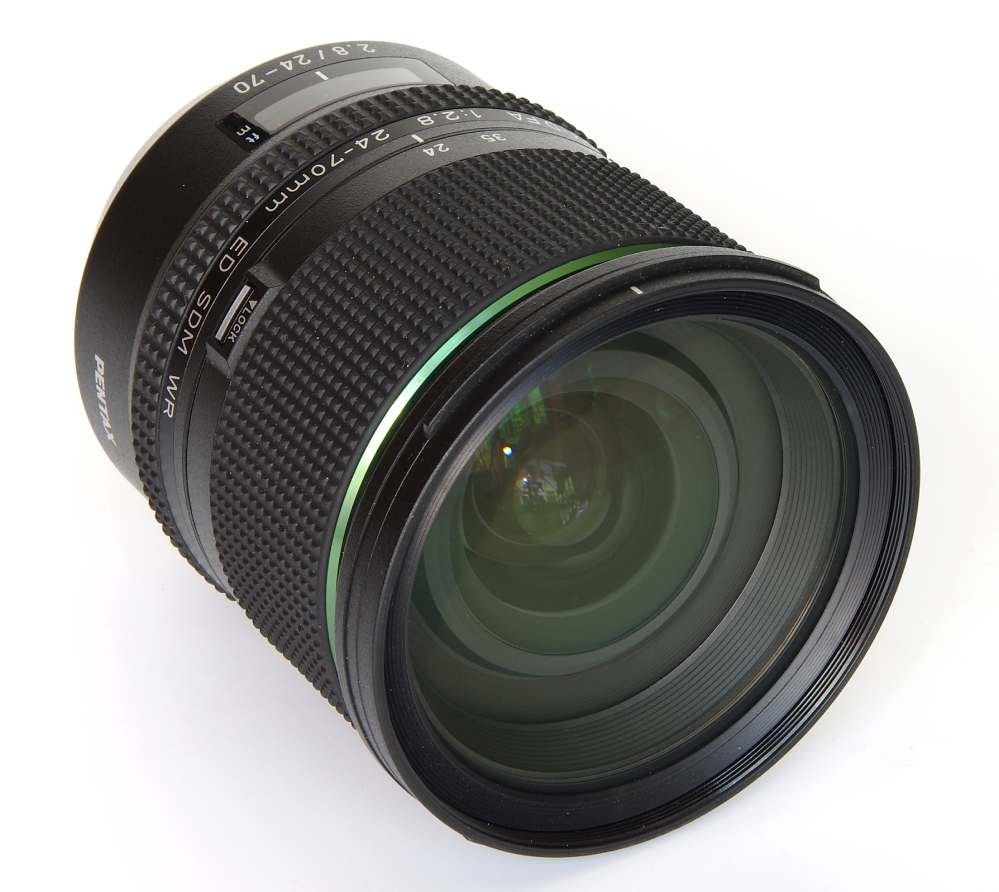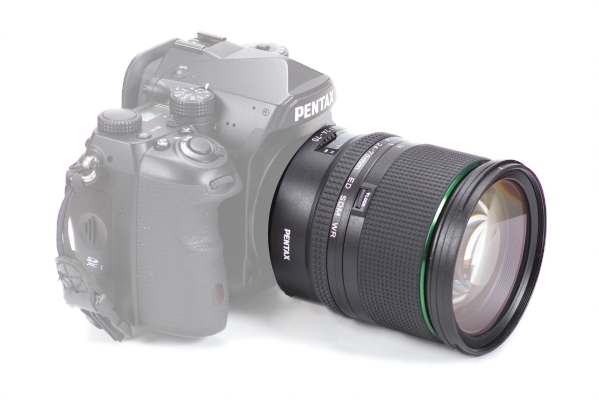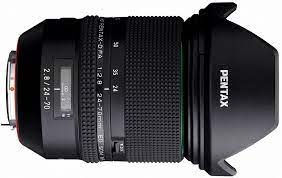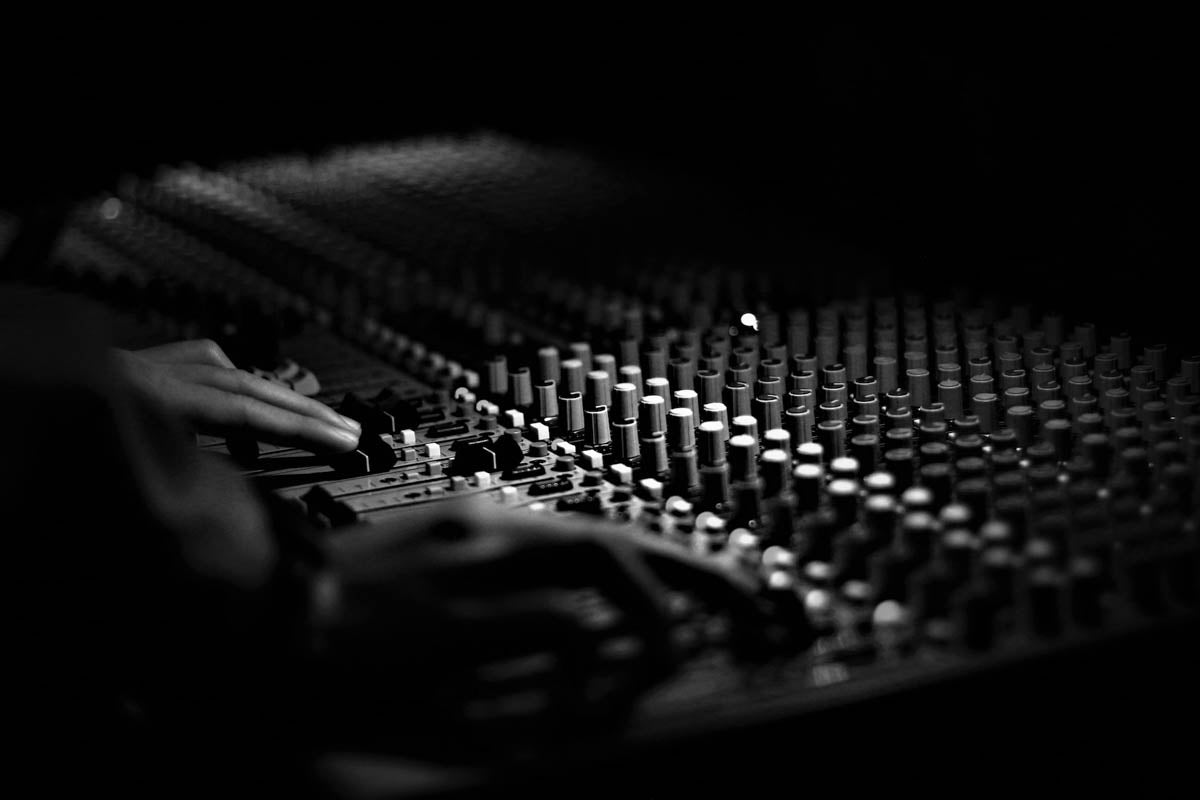Product Description
Pentax HD D-FA 24-70mm F/2.8 ED SDM WR Lens – Professional Standard Zoom
Fast & Versatile Standard Zoom for Pentax Full-Frame & APS-C DSLRs
The Pentax HD D-FA 24-70mm F/2.8 ED SDM WR is a high-performance standard zoom lens, offering exceptional image quality, a bright constant F/2.8 aperture, and rugged weather resistance. Designed for Pentax full-frame K-mount DSLRs, this lens delivers sharp, high-contrast images across a versatile 24-70mm focal range, making it ideal for landscapes, portraits, events, and low-light shooting.

With an advanced optical design featuring Extra-Low Dispersion (ED) and aspherical elements, this lens minimises aberrations, distortion, and flare. The Supersonic Direct-Drive Motor (SDM) autofocus system ensures fast, quiet focusing, while the weather-resistant (WR) construction provides durability in challenging environments.
Key Features & Benefits
Bright F/2.8 Constant Aperture for Low-Light & Depth Control
- Fast F/2.8 maximum aperture across the zoom range allows for low-light shooting and subject isolation.
- Delivers stunning bokeh with a rounded diaphragm, ideal for portraits and creative compositions.

High-Performance Optical Design for Superior Image Quality
- 17 elements in 12 groups, including three ED elements, one anomalous-dispersion aspherical element, and three aspherical elements, ensure high resolution and minimal aberrations.
- Optimised for high-resolution image sensors, delivering sharp, finely detailed images with high contrast.
- HD (High Definition) Coating reduces flare and ghosting, enhancing colour accuracy and contrast.

Versatile Focal Range for a Wide Range of Photography Styles
- Covers 24-70mm on full-frame, providing ultra-wide to short telephoto reach.
- Equivalent to 37-107mm on APS-C cameras, making it a perfect all-purpose lens.
- Ultra-wide 24mm setting is excellent for sweeping landscapes, interiors, and group shots.
- 70mm at F/2.8 offers a beautiful depth of field for portraits and subject isolation.
Fast, Silent Autofocus with SDM Technology
- Supersonic Direct-Drive Motor (SDM) delivers fast, precise, and nearly silent autofocus.
- Quick-Shift Focus System allows for instant manual focus override, providing greater precision and control.

Weather-Sealed (WR) Construction for Outdoor Reliability
- Special seals protect against moisture and dust, ensuring rugged durability for outdoor shooting.
- Pairs with Pentax weather-resistant DSLR bodies, creating a reliable all-weather system.
Why Choose the Pentax HD D-FA 24-70mm F/2.8?
- Bright F/2.8 aperture for excellent low-light performance and background separation.
- Versatile 24-70mm zoom range for landscapes, portraits, events, and everyday photography.
- Advanced optical elements for edge-to-edge sharpness and minimal distortion.
- Fast, quiet SDM autofocus with quick manual override.
- Weather-resistant construction for durability in challenging conditions.
- HD Coating for superior contrast and reduced flare.

A Must-Have Standard Zoom for Professional & Enthusiast Photographers
For photographers who need a fast, high-quality zoom lens, the Pentax HD D-FA 24-70mm F/2.8 ED SDM WR offers exceptional sharpness, fast autofocus, and all-weather durability. Whether shooting portraits, landscapes, events, or low-light scenes, this lens provides outstanding performance with creative flexibility.
Payment & Security
Your payment information is processed securely. We do not store credit card details nor have access to your credit card information.

























